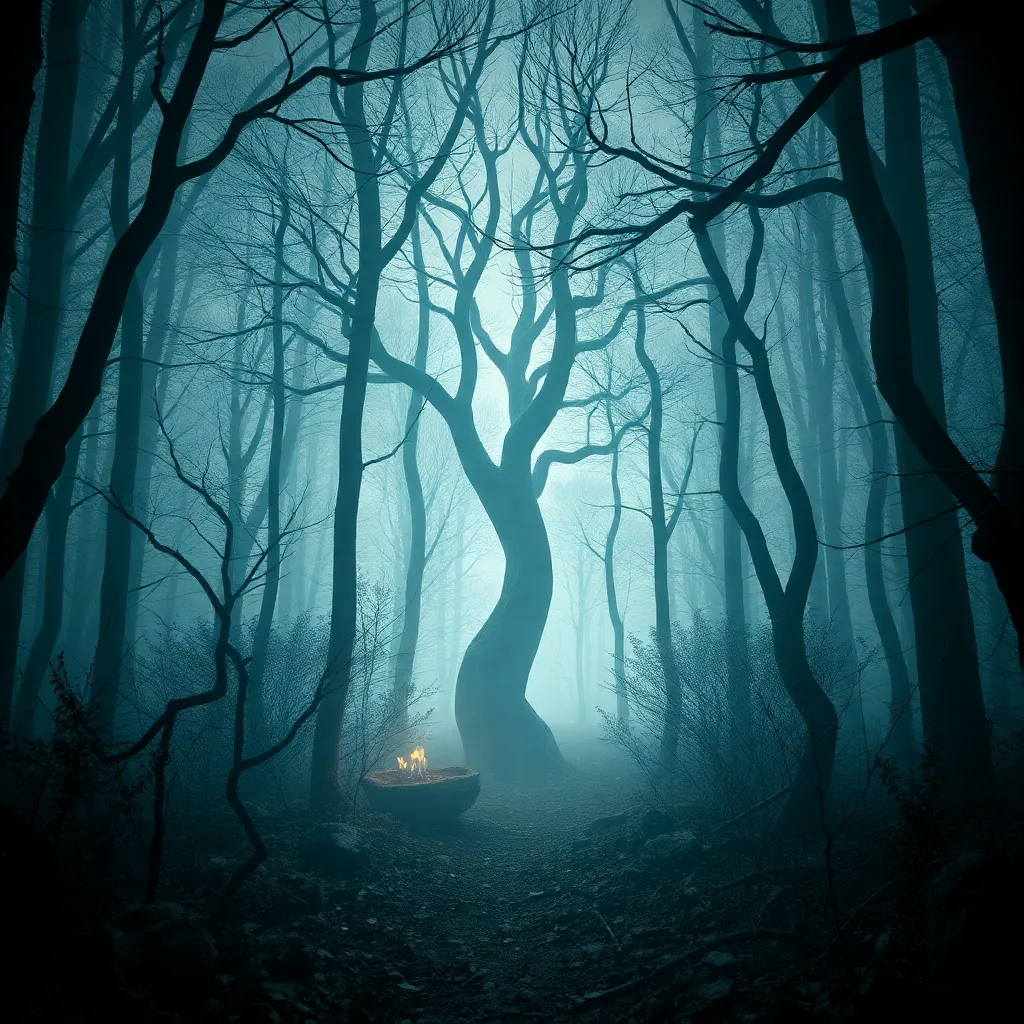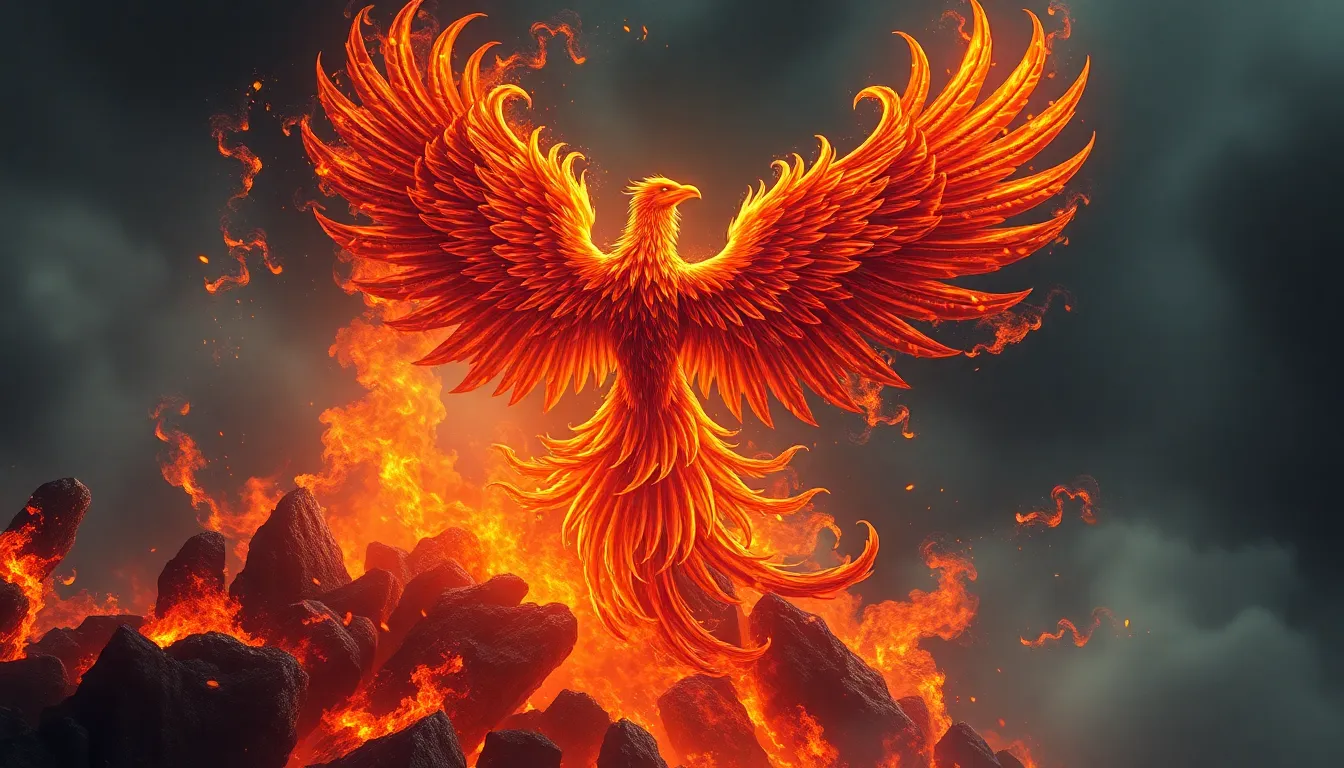Hidden in the Woods: Exploring the Huldra’s Secrets
I. Introduction to the Huldra Mythology
The Huldra is a captivating figure in Scandinavian folklore, characterized as a beautiful woman with an enchanting presence who resides in the forests. The term ‘Huldra’ originates from the Old Norse word ‘huld,’ meaning ‘hidden’ or ‘secret,’ reflecting her elusive nature. Traditionally, she is depicted as a forest spirit known for her charm and mystique.
Culturally, the Huldra holds significant importance in Scandinavian traditions, representing the connection between nature and humanity. She embodies the duality of beauty and danger, serving as a reminder of the respect one must have for the wilderness. As a guardian of the woods, the Huldra plays a crucial role in maintaining the balance between humans and the natural world.
II. The Physical Description of the Huldra
The Huldra is often described as a strikingly beautiful woman, with long, flowing hair and a mesmerizing smile. However, she is uniquely characterized by her cow’s tail, which she conceals under her clothing. This feature symbolizes her connection to the natural world and her role as a creature of the forest.
Descriptions of the Huldra can vary significantly across different regions of Scandinavia. In some tales, she is depicted as a woodland nymph, while in others, she resembles a seductress who lures men into the forest. Common variations include:
- In Sweden, the Huldra is often described as having a more ethereal and mystical appearance.
- In Norway, she may appear more human-like, blending seamlessly into the rural landscape.
- In Finland, the Huldra is sometimes represented with a more sinister demeanor, emphasizing her dangerous allure.
The symbolism of the Huldra’s appearance reflects themes of natural beauty, femininity, and the hidden aspects of nature that can be both inviting and perilous.
III. The Huldra’s Connection to Nature
As a protector of the forest, the Huldra is deeply intertwined with the natural environment. She is often seen as a guardian spirit who watches over animals and plants, ensuring that the forest remains a haven for wildlife. Her presence is believed to foster harmony within the ecosystem.
Interactions between the Huldra and wildlife are common in folklore. She is often depicted as having a special bond with animals, particularly those that inhabit the woods. This connection highlights:
- The Huldra’s role in maintaining the balance of nature.
- Her ability to communicate with animals, often aiding those who show respect to the forest.
- Environmental themes that emphasize the importance of conservation and respect for natural habitats.
IV. The Huldra in Folklore and Literature
The Huldra has been a subject of fascination in storytelling for centuries. Historical references to her can be found in various folk tales and legends passed down through generations. One of the most famous collections of Swedish folktales includes accounts of the Huldra, showcasing her dual nature as both benefactor and deceiver.
In modern literature and media, the Huldra has been adapted in various forms, from novels to films and art. These adaptations often explore her enigmatic nature, portraying her as a complex character that embodies both allure and danger.
When comparing the Huldra to similar mythical beings, one can draw parallels with:
- The Selkie of Scottish folklore, who also navigates themes of seduction and transformation.
- The Dryads of Greek mythology, who are spirit guardians of trees and embody the essence of nature.
- The banshee in Irish folklore, who serves as a harbinger of death, illustrating the darker aspects of female spirits.
V. Encounters with the Huldra: Stories and Legends
Numerous tales recount human encounters with the Huldra, often filled with themes of seduction, danger, and intrigue. One famous story tells of a young man who, upon wandering into the woods, encounters a stunning woman who beckons him closer. As he approaches, the allure of her beauty is palpable, yet a sense of danger lurks beneath the surface.
These encounters frequently emphasize moral lessons, such as:
- The importance of respecting nature and its inhabitants.
- The dangers of succumbing to temptation without understanding its consequences.
- Warnings against straying too far from the beaten path, both literally and metaphorically.
VI. The Huldra in Contemporary Culture
In contemporary culture, the Huldra continues to inspire artists, writers, and filmmakers. Her image can be found in modern art, often representing the beauty and mystery of nature. Additionally, she has become a symbol within eco-conscious movements, embodying the need to protect the environment.
Festivals celebrating Huldra mythology are held in various Scandinavian countries, where communities come together to honor the spirit of the forest. These events often include:
- Storytelling sessions that share traditional tales of the Huldra.
- Art exhibits showcasing interpretations of the Huldra in contemporary works.
- Workshops focused on environmental conservation inspired by the Huldra’s role as a guardian of nature.
VII. The Psychological and Symbolic Interpretations
The Huldra can be interpreted as a symbol of femininity and the innate connection between women and nature. Her dual nature reflects societal fears and desires surrounding female power and sexuality. Psychologically, the Huldra’s allure can represent the unconscious attraction to the unknown and the wild aspects of life.
From a psychological perspective, the Huldra myth encapsulates:
- The archetype of the femme fatale, embodying both danger and enchantment.
- The complexities of human relationships with nature, illustrating the tension between civilization and the wild.
- The representation of societal fears regarding the feminine and the untamed.
VIII. Conclusion: The Enduring Legacy of the Huldra
The Huldra remains a relevant figure in today’s world, embodying the mysteries of the natural world and the complexities of femininity. As society continues to grapple with environmental issues and the balance between human activity and nature, the Huldra serves as a reminder of the importance of preserving folklore and mythology.
In closing, the Huldra’s presence in stories, art, and cultural practices highlights the enduring legacy of this mythical figure. Her secrets, hidden in the woods, invite us to explore the deeper connections between humanity and the natural world, encouraging a sense of wonder and respect.


